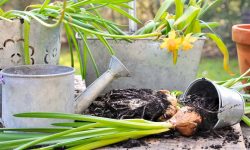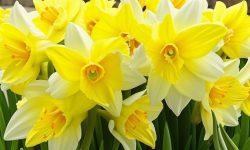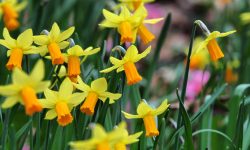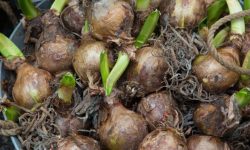Gerbera daisies, with their brilliant blooms and cheerful disposition, are a favorite among garden enthusiasts and home decorators alike. Native to South Africa, these vivid flowers bring a tropical touch to gardens, patios, and indoor spaces. Whether you’re planting them in a sunny backyard or adding a pop of color to your windowsill, learning how to grow Gerbera daisies like a pro can help you enjoy long-lasting and healthy blooms year-round. This comprehensive guide will walk you through every stage of Gerbera daisy care, from soil selection to pest management.
Understanding Gerbera Daisies

Characteristics and Varieties
Gerbera daisies (Gerbera jamesonii) are part of the Asteraceae family, which also includes sunflowers and asters. They are known for their large, vividly colored flowers that come in shades of red, orange, yellow, pink, white, and bi-color combinations. Each bloom features a central eye and petal structures that vary from simple single layers to intricate double and crested forms.
There are two main categories of Gerbera daisies: standard varieties, which are often used as cut flowers, and miniature or dwarf types that are perfect for pots and borders. While they are perennials in USDA zones 8–11, Gerberas are often grown as annuals in colder climates.
Growth Habits
Gerbera daisies grow from a basal rosette, meaning all the leaves emerge from the crown at soil level. The flower stalks rise directly from this base, and healthy plants can produce blooms repeatedly throughout the growing season with proper care.
Preparing to Plant Gerbera Daisies
Choosing the Right Location
Sunlight is critical for Gerbera daisies. For outdoor planting, select a location that receives at least six hours of direct sunlight daily. If you’re growing them indoors, place them near a south- or west-facing window where they can get abundant bright light. Insufficient sunlight leads to leggy plants and fewer blooms.
Avoid locations that are prone to waterlogging. Gerberas prefer well-draining soil and can suffer root rot in soggy conditions. If necessary, improve outdoor soil drainage by adding sand or organic compost.
Soil and Potting Mix
The ideal soil for Gerbera daisies is slightly acidic with a pH between 5.5 and 6.5. It should be rich in organic matter and provide good aeration. For container gardening, use a high-quality potting mix combined with perlite or vermiculite to enhance drainage.
When planting Gerbera daisies in pots, ensure the container has drainage holes. Clay or terracotta pots are preferred because they allow excess moisture to evaporate and prevent root diseases.
Planting Gerbera Daisies
Outdoor Planting Techniques
Wait until all danger of frost has passed before planting Gerberas outdoors. Loosen the soil and dig a hole just deep enough to accommodate the root ball. Place the plant so that the crown sits slightly above soil level to prevent rot. Backfill the hole and gently press the soil around the base.
Water the plant thoroughly after planting and add a light layer of mulch around the base. Keep mulch away from the crown to prevent moisture buildup that can lead to fungal issues.
Indoor Planting Strategies
For indoor planting, start with young plants or propagate from seed if you’re patient. Choose a bright, airy space free from drafts and temperature extremes. Use a medium-sized container to give roots room to spread, and keep the crown slightly elevated above the soil.
Rotate indoor Gerbera daisies regularly to ensure even light exposure. This helps prevent plants from leaning toward one direction and encourages symmetrical growth.
Daily Care and Maintenance
Watering Schedule
Gerbera daisies like consistent moisture but dislike soggy conditions. Water the plants when the top inch of soil feels dry to the touch. For outdoor plants, early morning watering is ideal as it allows leaves to dry quickly, reducing the risk of fungal infections.
Indoor plants require less frequent watering, especially in cooler months. Avoid getting water on the leaves or flower centers, as this can lead to spotting or fungal diseases.
Fertilizing for Better Blooms
Feed your Gerbera daisies every two weeks during the growing season with a balanced, water-soluble fertilizer. A formulation high in potassium and low in phosphorus encourages vibrant blooms and healthy roots.
Slow-release fertilizers can also be incorporated into the soil at planting time for a steady supply of nutrients. Avoid over-fertilization, as this can lead to excessive leaf growth at the expense of flowers.
Pruning and Deadheading
Regularly remove spent blooms to encourage continuous flowering. This process, known as deadheading, redirects the plant’s energy from seed production back into flower development. Cut flower stems close to the base rather than pinching the bloom, which ensures cleaner regrowth.
Trimming back leggy or yellowing leaves also promotes airflow and reduces the risk of disease. Always use clean, sharp scissors or pruning shears.
Seasonal Considerations
Caring for Gerberas in Summer
During hot months, monitor soil moisture closely, especially for container plants. Increased evaporation may require more frequent watering. Providing partial shade during the hottest part of the day can prevent leaf scorch and extend blooming.
Preparing for Winter
In colder regions, Gerbera daisies should be treated as annuals or brought indoors before the first frost. Potted plants can be overwintered indoors in a cool, well-lit area. Reduce watering and stop fertilizing to allow the plant to enter dormancy.
In milder climates, add a thick layer of mulch to protect the crown and roots from temperature fluctuations. Avoid heavy watering during winter to prevent root rot.
Pest and Disease Management
Common Pests
Aphids, whiteflies, and spider mites are the most common pests affecting Gerbera daisies. These insects can be managed with regular inspection and prompt action. Use insecticidal soap or neem oil spray to control infestations. Ensure good air circulation around the plant to deter pests.
Fungal and Bacterial Issues
Gerberas are susceptible to fungal diseases like powdery mildew, crown rot, and leaf spot. These problems often arise from excessive moisture or poor air circulation. Water at the base of the plant and keep foliage dry. Remove infected leaves immediately and treat with a suitable fungicide if needed.
Proper spacing, sanitation, and pruning can go a long way in preventing disease outbreaks.
Propagation Techniques
Growing from Seeds
Growing Gerbera daisies from seed requires patience and attention. Sow seeds indoors 10 to 12 weeks before the last expected frost date. Use a sterile seed-starting mix and lightly press seeds into the surface. Keep the soil moist and provide consistent warmth and light.
Germination usually takes 14 to 21 days. Once seedlings have developed two sets of true leaves, transplant them into individual pots and continue growing until they are strong enough for outdoor planting.
Dividing Mature Plants
Mature Gerbera daisies can be propagated by division. Carefully dig up the plant and separate it into sections, each with a healthy crown and root system. Replant divisions immediately and water thoroughly. This method is best done in early spring or fall.
Display and Design Ideas
Garden and Landscape Use
Gerbera daisies make excellent border plants and provide bold color in flower beds. Pair them with complementary perennials like salvia, lavender, or coreopsis to create a dynamic, pollinator-friendly garden.
Use them along walkways or in mixed containers for patio displays. Their compact growth habit and vivid blooms make them a standout choice.
Indoor Décor Inspiration
Indoors, Gerbera daisies brighten up windowsills, desks, and tables. Choose decorative pots that match your interior style and ensure they receive enough light. They also make beautiful cut flowers in arrangements, adding cheer to any room.
Rotate plants occasionally to maintain balanced growth and prevent them from leaning toward the light source.
Frequently Asked Questions (FAQ)
How much sunlight do Gerbera daisies need?
Gerbera daisies require at least 6 hours of direct sunlight per day to thrive. Outdoors, plant them in full sun. Indoors, place them near a bright south- or west-facing window. Without enough light, the plants may grow leggy and produce fewer blooms.
Can I grow Gerbera daisies indoors all year?
Yes, Gerbera daisies can be grown indoors year-round if they receive sufficient light and proper care. Ensure the plant is kept near a bright window and maintain consistent watering and humidity levels. Avoid placing the plant in drafty areas or near heating vents.
Why are my Gerbera daisy leaves turning yellow?
Yellowing leaves are often a sign of overwatering, poor drainage, or nutrient deficiency. Check the soil moisture and ensure the pot has good drainage. Also, consider feeding the plant with a balanced fertilizer to correct any nutrient imbalances.
How often should I water Gerbera daisies?
Water your Gerbera daisies when the top inch of soil feels dry. For indoor plants, this may mean once every 5–7 days, depending on humidity and temperature. Be cautious not to let the soil stay soggy, as this can cause root rot.
Do Gerbera daisies come back every year?
Gerbera daisies are perennials in USDA zones 8–11, meaning they can come back year after year in mild climates. In colder regions, they are treated as annuals or overwintered indoors. Bringing potted Gerberas inside during winter helps them survive and bloom again in spring.
Can I propagate Gerbera daisies from seeds?
Yes, Gerbera daisies can be grown from seeds, although it requires patience. Sow seeds indoors 10–12 weeks before the last frost, provide warmth and light, and expect germination in about 2–3 weeks. Transplant young plants once they are strong enough.
What are the most common pests that affect Gerbera daisies?
Common pests include aphids, spider mites, and whiteflies. These can be managed with neem oil sprays, insecticidal soap, or by rinsing the leaves with water. Regularly inspect the plant and ensure good airflow to prevent infestations.
How can I keep my Gerbera daisies blooming longer?
To extend blooming, deadhead spent flowers, maintain a consistent watering schedule, and feed the plant regularly with a fertilizer high in potassium. Ensure the plant gets ample sunlight and remove yellowing leaves to keep it healthy.
Conclusion
Growing Gerbera daisies like a pro—whether indoors or out—requires an understanding of their unique needs and a commitment to regular care. From choosing the right soil and sunlight to mastering watering and pest control, each step contributes to healthy, vibrant blooms. With the right techniques, your Gerbera daisies can flourish season after season, rewarding you with bursts of color and undeniable charm.
Now that you’ve explored the complete guide, you’re well on your way to creating a stunning display of Gerbera daisies that thrive in any setting.






